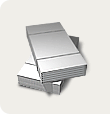The very name of this plumbing tool says that a pipe cutter is a device for cutting pipes. You cannot do without this tool if you need to repair pipes, install heating, sewerage or water supply systems with your own hands.
However, take your time. Before you run to the store for a pipe cutter, you need to decide what exactly you want. Each type of pipe requires its own type of pipe cutter. It must be understood that a steel pipe cutter is unlikely to cope with a plastic pipe. However, a steel pipe cutter will perfectly cut plastic or copper pipes.
So, when choosing a pipe cutter, you must clearly determine the type of pipes to be mounted. For installation, it is not at all necessary to use, for example, a pipe cutter for plastic pipes, because special scissors can easily cope with ordinary thin-walled pipes.
A separate topic is copper pipes. When installing the water supply system, it is better not to use a hacksaw for metal, since only a pipe cutter can ensure that there is no contamination and a clean cut.
Most pipe cutters can handle pipes up to 100 mm in size. In general, a pipe cutter is a simple structure of a body and disc cutter rollers.
So, now you need to decide on the type of the pipe cutter itself.
For domestic use, two types of pipe cutters are suitable: electric and manual. The difference lies in how the apparatus is operated. In principle, a manual pipe cutter is fine for most jobs. In many cases, a steel pipe cutter is also a versatile tool because it can handle both copper and reinforced plastic pipes.
There is a classification of pipe cutters:
- for heavy work - for steel and cast iron pipes with a diameter of 4-12 inches. This also includes devices with a clamping latch, capable of handling pipes up to 320 mm.
- for thin-walled pipes - for copper, brass and stainless steel pipes. This class also includes pipe cutters reinforced plastic pipes.
- for waste pipes - cutting of ceramic, cast iron and asbestos-cement pipes.
For mass professional work, an electric pipe cutter is usually used.
So how is pipe cutting done? To begin with, do not forget to lubricate the cutting area with oil. When carrying out work on plastic and metal-plastic pipes, this can be omitted. The pipe cutter is put on at the break. The roller is brought to the pipe by rotating the clamping device. Then the pipe cutter is rotated in turn in different directions. Using a clamping device, the rollers are brought together. This process continues until the pipe is cut.
It is not recommended to deepen the rollers into the pipe too much, because this may cause their untimely failure. The most important thing is to act gradually and effortlessly. If the pipe cutter turns very tightly, loosen the jig.
Plastic pipes are cut much faster ( already it's understandable why). Given the simplicity of the pipe cutter device, you can cut any kind of pipe yourself.
Pipe cutter: which one to choose and how to use
|
|
Azovpromstal® 23 October 2012 г. 08:35 |
Subscribe to news 
Metallurgy news
- Today
19:00 18:00 The value of Taiwan's iron and steel exports decreased by 7.8 percent in January-October 2025 18:00 Federaccai: The green deal and the rules of international trade must be changed 17:00 The German company Salzgitter reports a decrease in net loss for January-September 2025 17:00 Romanian authorities are launching an investigation into possible fraud with the co₂ certificate at Liberty Galati 16:00 EU joins Brazil's initiative to promote global development of carbon markets 16:00 New car Registrations in South Korea Increased by 15.5% in January-October 2025 16:00
Publications
09.11 lithium-ion traction batteries from FOMOS EIKTO: an innovative solution for warehouse equipment 06.11 Industrial floors from the company Meridian 03.11 Professional video surveillance for stores 31.10 Professional IT services 30.10 Equire Safe Storage Warehouse





